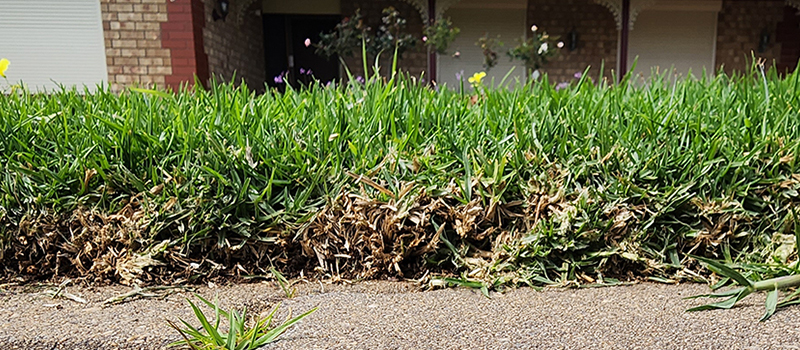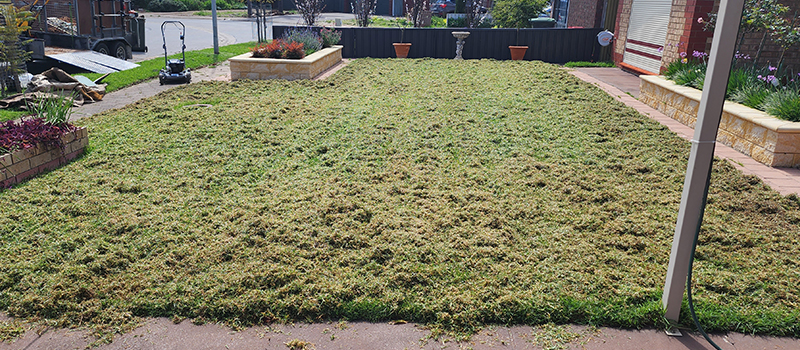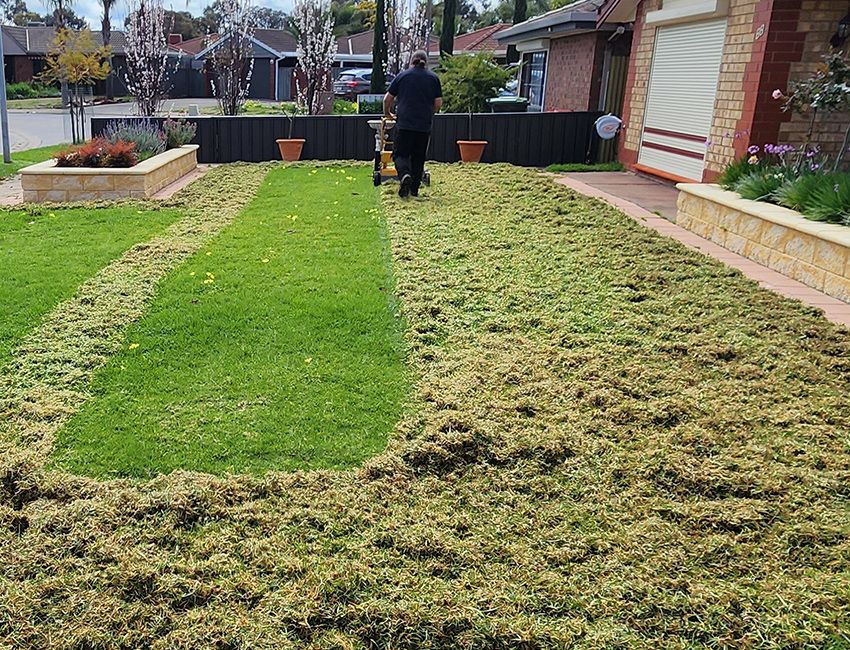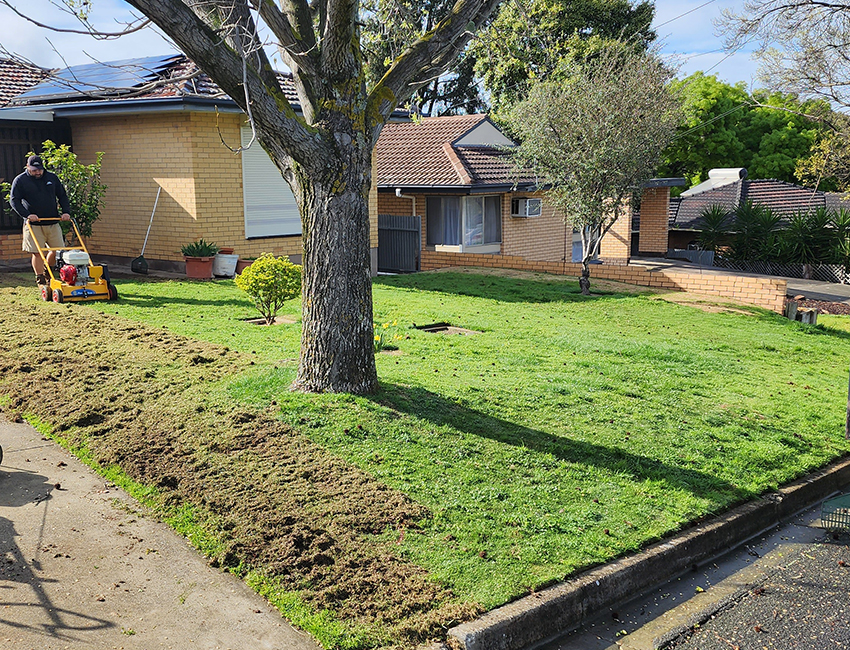Scarification is the process of removing thatch and other organic matter from a lawn to improve the health and appearance of the grass.
Thatch is a layer of dead and decomposing grass and other organic material that can form between the soil surface and the living grass. While a small amount of thatch can be beneficial, too much can suffocate the grass and create a breeding ground for pests and disease.
Scarification can be done manually, using a rake or a specialised scarifying tool, or by using a powered scarifying machine. The manual method of scarification is physically demanding and can be time-consuming, while the machine method is more efficient and effective.
When is the best time?
The best time to scarify the lawn depends on the type of grass you have, as distinct types of grass have different growth patterns.
Scarifying can be done from about October through to February for Kikuyu and Couch, but the best time of year to do it is October and November.
It’s a multi-staged process involving removing the thatch, then thinning out the root zone. Sometimes, just removing the thatch is enough. Other times, you must thin out the root zone as well. This helps return a thick, spongy lawn back into a green, tight-knit surface and is something you’ll need to do at least every 2 years.


We cover a wide area around Adelaide – Check if we can come to you!
The process of scarifying involves removing the thatch layer that has accumulated on the lawn surface. This can be done by using a rake or special tools like a spring-tined rake or a scarifier with a knife or a blade.
The machine method also uses a series of blades or knives that spin and cut through the thatch layer, removing it and leaving small holes on the soil surface.
Scarification can have a number of benefits, including improved water penetration, better air and nutrient movement to the root zone, and fewer pests, weeds, and diseases.
This will also make the lawn look better, as the grass will be able to grow and spread more easily. Scarifying also removes moss and other invasive weeds, which can often choke the lawn.
While scarifying can be beneficial for your lawn, it is important to note that it should not be done too frequently.
Over-scarifying can lead to damage to the soil structure and leave the lawn more vulnerable to drought, heat, and heavy traffic.
It is always good to have an expert or professional check the work and complete it.



Step 1: Remove the Thatch
Removing the thatch is a process where you mow off the surface layer of your lawn completely down to soil level. The more soil you can see when you’ve finished, the better job you’ve done.
Rest assured, you can’t damage a Couch or Kikuyu lawn with a lawn mower! This process will completely remove the colour from your lawn – this is expected and normal.
Don’t be surprised when you remove an enormous amount of thatch. Often, just scaping is enough to rejuvenate your lawn. It will return your lawn to a low, flat surface making it easier to keep green.
If you want to go the whole hog, proceed to step 2!
Step 2: Scarify the Rootzone
This is where you use a specialised scarifying machine to thin out the root zone.
Over time, the rootzone of couch and kikuyu lawns thickens up which can impede the life and health of the lawn. Sometimes called Verti mowing, this pruning and thinning out process removes dead and woody organic matter which re-invigorates the lawn and allows it to grow new, fresh stolons and rhizomes.
Scarifiers have a series of verticle blade disks that cut down into the root zone of your lawn
Step 3: Apply a Wetting Agent, and then Fertilise
After scarifying and or scalping, treat your lawn with some liquid wetting agent and fertiliser. A liquid wetting agent will ensure that water and nutrient penetrate evenly and deeply. This will help your lawn recover faster.
As mentioned earlier, at this point your lawn will look pretty terrible. Don’t be alarmed at all by this – the warmer it is, the faster the lawn will grow back.
After 2 weeks you’ll be able to see a green layer returning and typically after 4 weeks, your lawn will have completely recovered but with no thatch!


